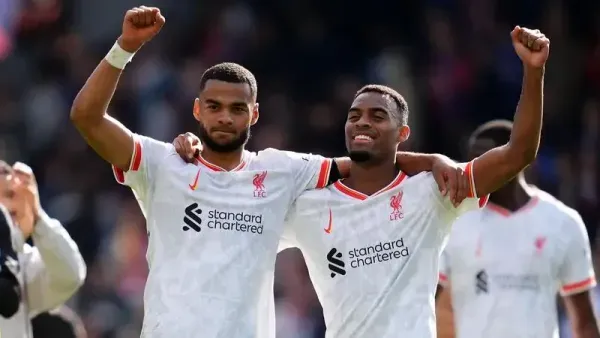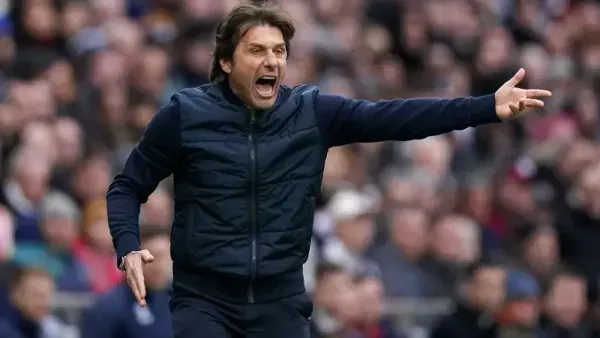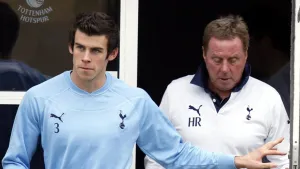In the increasingly complex world of modern football, a coach's role has expanded far beyond the touchline. They are no longer just man-managers or motivators; they are architects, tacticians, and innovators. The most significant testament to this is the moment a manager identifies a hidden talent or an untapped potential in a player and, through a shrewd tactical switch, unleashes a new, world-class version of them. It's an act of pure genius that can define a season, a legacy, or an entire tactical era.
Here are five of the most transformative examples of a coach turning a good player into a world-beater.
5. Arne Slot and Ryan Gravenberch: From Inconsistent Midfielder to Defensive Shield
When Arne Slot arrived, Liverpool’s midfield was in flux. Ryan Gravenberch, a player with undeniable technical ability and a rangy stride, had struggled to find a consistent role, often looking lost in a box-to-box capacity. Slot's masterstroke was to identify that Gravenberch’s greatest attributes were not his forward forays but his composure, press resistance, and intelligence in deeper areas.
Slot converted Gravenberch into a primary defensive midfielder, an anchor at the base of his new-look 4-2-3-1 formation. This positional shift wasn't just about putting a player in a new spot; it was a fundamental change in his tactical responsibilities. Gravenberch was no longer tasked with chasing the game but with dictating its tempo. He was given the freedom to drop between the centre-backs, receive the ball, and use his exceptional line-breaking dribbling to carry the team out of pressure. This role played to his strengths, allowing him to anticipate opposition moves and use his long legs to make more interceptions than any other Premier League midfielder that season. The discipline and maturity he showed in this new role transformed him into a pivotal, title-winning figure.

4. Antonio Conte and Victor Moses: From Loanee to Title-Winning Wing-Back
Antonio Conte’s arrival at Chelsea in 2016 came with a tactical revelation: a shift to a 3-4-3 formation. The system required a unique type of player on the flanks—a wing-back who could defend with the diligence of a full-back and attack with the purpose of a winger. Most observers expected a new signing to fill this demanding role, but Conte saw the raw materials in an unlikely source: Victor Moses.
Moses had spent the previous three seasons on loan, a winger who lacked the end product to consistently feature for Chelsea. Conte, however, didn’t just ask him to play the position; he demanded it, placing him there on the training ground without a second thought. Moses’s explosive pace, direct dribbling, and tireless work rate—attributes that had been used in fits and starts as a winger—were now perfectly harnessed for the wing-back role. He had the energy to patrol the entire flank, providing defensive cover while also overlapping to create overloads in attack. The switch was a masterclass in coaching, not just of a player’s position, but of their mindset. Moses became a fixture of a Chelsea side that went on to win the Premier League, proving that the right system can elevate a player beyond all expectations.

3. Harry Redknapp and Gareth Bale: From Left-Back to Dynamic Winger
Gareth Bale’s early career at Tottenham was a paradox of immense potential and frustrating inconsistency. He arrived as a promising left-back but struggled with defensive duties and was even considered a jinx, as Spurs failed to win in his first 24 league appearances. Harry Redknapp, however, began to notice something during training: Bale's pure, unadulterated explosive power and his ability to tear past defenders in attacking drills.
The shift was gradual but decisive. Redknapp began pushing Bale higher up the pitch, freeing him from the rigid defensive responsibilities of a full-back. Bale’s game truly exploded when he was given a more advanced role on the left wing, where he could use his blistering pace and powerful striking ability to devastating effect. He became a one-man wrecking crew, famously tearing apart Inter Milan's Maicon in the Champions League, a performance that announced him to the world as an elite player. Redknapp’s move not only unleashed Bale’s raw athletic gifts but also allowed the team to build their attack around him, knowing his forward runs would create chaos for any defence.

2. José Mourinho and Cristiano Ronaldo: From Winger to Goal-Scoring Machine
For the early part of his career, Cristiano Ronaldo was a thrilling but at times inefficient winger, a player as famous for his stepovers and flicks as for his goals. At Manchester United, he was a superstar. But under José Mourinho at Real Madrid, he became a goal-scoring machine. Mourinho’s tactical insight was to stop relying on Ronaldo's wide play and to mould him into a more direct, central threat.
While he never became a traditional No. 9, Mourinho gradually moved Ronaldo into a position where he operated as a "wide centre forward," allowing him to cut inside and use his incredible finishing ability with more regularity. In Real Madrid’s rapid 4-2-3-1 counter-attacking system, Ronaldo's role was to sprint into the channel, receive the ball, and shoot. He was freed from defensive tracking and was encouraged to be selfish in front of goal. This tactical switch, combined with Mourinho's emphasis on directness, turned Ronaldo into a goal machine, breaking countless records and cementing his place as one of the greatest goalscorers in history. The partnership was a perfect match of a coach who prized efficiency and a player who could deliver it in spades.

1. Pep Guardiola and Lionel Messi: The Invention of the False Nine
The tactical innovation that changed football. Before Pep Guardiola, Lionel Messi was a world-class inverted winger, a dribbling wizard on the right flank. In a pivotal El Clásico against Real Madrid in 2009, Guardiola made a move that shocked everyone: he dropped his main striker, Samuel Eto'o, to the wing and deployed Messi as a "false nine."
This wasn’t just a positional change; it was a re-imagining of how a forward operates. Messi was placed in the centre of the attack but was instructed to drop deep into midfield, drawing the opposition centre-backs out of position. This created a gaping hole in the defence, which the likes of Thierry Henry and Samuel Eto'o would then exploit with their diagonal runs. Messi, with his unmatched vision, passing, and dribbling, would receive the ball in space, unburdened by a defensive marker, and could either thread a killer pass or drive straight at the backline. It was a tactical ploy that perfectly suited Messi’s genius, allowing him to combine the role of a playmaker with that of a lethal goalscorer. This single tactical decision not only led to a historic treble for Barcelona but also defined an era of football and forever changed the way managers approach the attacking third.
The common thread through all these examples is clear: the modern coach's genius lies not in finding the perfect player, but in creating them. These instances show that a great tactician can see beyond a player’s current role and unlock a new, more powerful version of them, fundamentally altering the trajectory of both the player and the team. It is the ultimate expression of coaching excellence.




